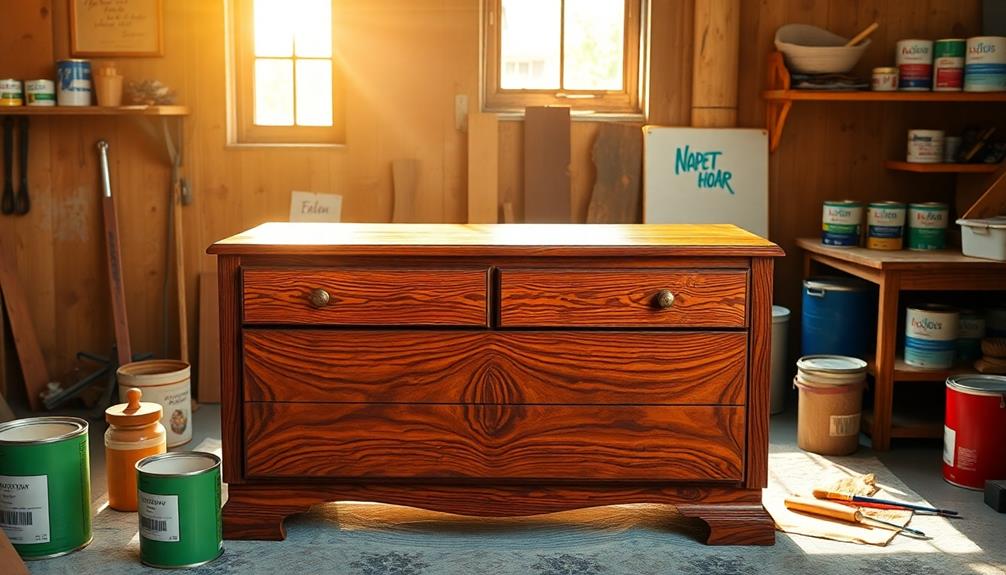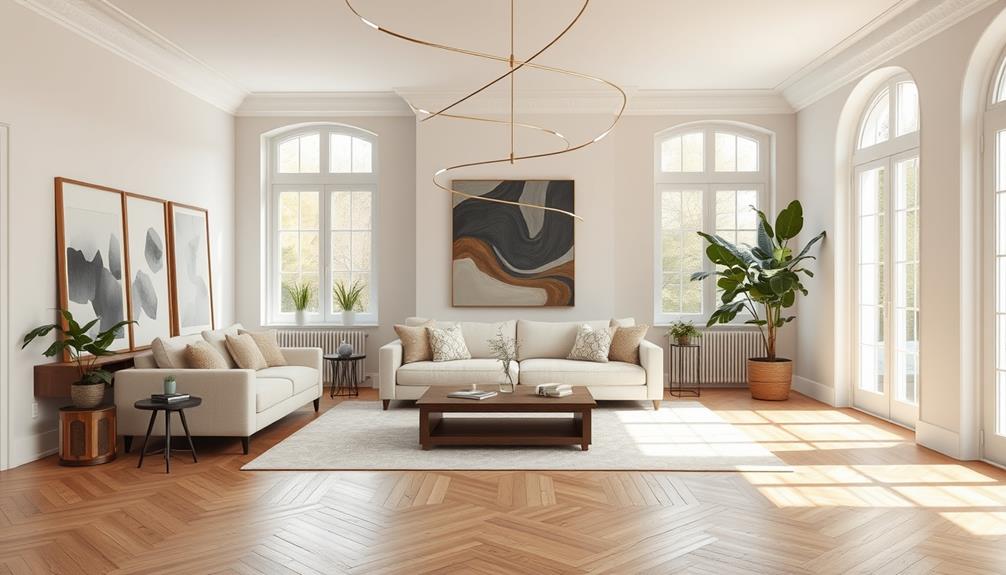Mastering the art of spa reviews starts with keen observation and honesty. Focus on key elements like customer service, treatment effectiveness, and the ambiance. Describe how the staff made you feel and how unique treatments enhanced your experience. Structure your review with clear headings, making it easy for others to follow your insights. Don't forget to mention any standout features, like eco-friendly practices or special amenities. Your details can guide fellow spa-goers in making informed choices. Keep exploring as we share more tips to elevate your reviews and guarantee they truly resonate with others.
Key Takeaways
- Focus on the ambiance, detailing cleanliness, decor, and sensory elements like scents and sounds to convey the overall experience.
- Evaluate customer service by highlighting staff professionalism, attentiveness, and their ability to personalize treatments for guests.
- Describe specific treatments received, mentioning their effectiveness and how they catered to individual relaxation needs.
- Provide constructive feedback that can guide potential spa-goers, helping them make informed decisions based on your honest experience.
- Organize your review with clear headings and bullet points, making it easy for readers to navigate through your insights.
Key Elements of a Spa Review

When writing a spa review, capturing five key elements can greatly enhance the reader's experience. First, focus on customer service; attentive and friendly staff can make all the difference.
Additionally, highlight the treatments you received, detailing their effectiveness and personalization.
Third, discuss the overall ambiance of the spa, including cleanliness and comfort.
Next, evaluate the efficiency of appointment booking and inquiries, as this reflects professionalism.
Finally, point out any standout features unique to the spa, like signature treatments or special amenities.
Structuring Your Review

To create an engaging and informative spa review, start by following a clear and organized structure. This helps your readers easily navigate your insights. Consider using headings and bullet points to highlight key aspects.
Here's a simple structure you can follow:
| Section | Description |
|---|---|
| Introduction | Brief overview of your spa experience. |
| Atmosphere | Describe the ambiance, cleanliness, and decor. |
| Staff | Evaluate staff professionalism and attentiveness. |
| Conclusion | Summarize your overall impression and recommendations. |
Services and Treatments Overview

Spa services and treatments cater to a diverse range of relaxation needs, ensuring there's something for everyone.
Whether you're looking to unwind after a long week or indulge in a rejuvenating experience, the options are plentiful. Here are some popular services you might enjoy:
- Soothing Massages – Let skilled hands melt away tension and stress.
- Invigorating Facials – Revitalize your skin and give yourself a fresh glow.
- Couples Massages – Share a blissful experience with a loved one, enhancing connection.
- Sauna and Jacuzzi Access – Enjoy the warmth and tranquility before or after your treatments.
Each treatment is designed to provide a warm atmosphere and personalized care, making your visit unforgettable.
Embrace the serenity and tailored services that await you.
Evaluating Customer Service

Experiencing exceptional customer service can greatly elevate your spa visit, making it not just a treatment, but a memorable journey.
When you walk into a spa, you should feel welcomed by friendly and knowledgeable staff ready to assist you. Pay attention to how quickly they handle your inquiries and the efficiency of appointment booking. This can set the tone for your entire experience.
Evaluate whether the staff provides personalized care, anticipating your needs and preferences. Also, consider their communication skills—are they attentive and clear?
Good customer service should leave you feeling valued and relaxed, enhancing your overall satisfaction. Remember, a spa's true essence often lies in the quality of care you receive from its team.
Enhancing the Spa Experience

Transforming your spa visit into a truly memorable experience involves engaging all your senses from the moment you arrive.
You'll want to immerse yourself in a serene atmosphere that calms your mind and body. Here are four ways to enhance your spa experience:
- Savor Calming Aromas: Inhale soothing scents like lavender or eucalyptus that promote relaxation and tranquility.
- Delight in Serene Sounds: Listen to gentle music or nature sounds that create a peaceful backdrop for your treatments.
- Experience Luxurious Touch: Enjoy expert massages or facials that cater to your specific needs, leaving you revitalized.
- Indulge in Visual Beauty: Appreciate tasteful decor and soft lighting that enhances the overall ambiance, making your spa visit truly special.
Sustainable Practices in Spa Design

Many people are increasingly drawn to spas that embrace sustainable practices, as these eco-friendly designs not only promote relaxation but also contribute to environmental well-being. These spas are incorporating spa design trends 2023, such as the use of reclaimed materials, energy-efficient technologies, and natural, locally-sourced products. By prioritizing sustainability, they cater to conscious consumers who seek wellness experiences that align with their values. Such thoughtful designs highlight a harmonious balance between luxury and responsibility, setting the tone for a greener future in the wellness industry.
You'll find that many spas utilize eco-friendly materials like bamboo, reclaimed wood, and hempcrete, which not only look beautiful but also reduce the carbon footprint. Bamboo, for instance, grows rapidly and absorbs significant CO2, making it a fantastic choice.
Additionally, sustainable building practices improve indoor air quality and comfort, ensuring a serene atmosphere for your spa experience.
Tips for Effective Spa Reviews

Choosing a spa that prioritizes sustainability can enhance your overall experience and connection to nature.
To write an effective spa review, follow these tips:
- Be Honest: Share your genuine feelings about the services and atmosphere.
- Focus on Details: Describe specific treatments you enjoyed, highlighting what made them special.
- Evaluate Staff: Discuss the staff's professionalism and attentiveness, as it can make or break your experience.
- Mention Ambiance: Capture the spa's vibe—think about the soothing music, calming scents, and overall tranquility.
Frequently Asked Questions
What Should I Wear to a Spa Appointment?
You should wear comfortable, breathable clothing to your spa appointment. Many spas provide robes and slippers, but you might want to bring your own swimsuit for certain treatments, like pools or saunas. Enjoy your experience!
Are There Age Restrictions for Spa Services?
Yes, many spas enforce age restrictions for services. You'll often find that treatments are available for adults only, while others might offer specific services for teens. Always check with the spa beforehand to confirm their policies.
Can I Bring My Own Food or Drinks?
Most spas don't allow outside food or drinks to maintain a serene environment. You should check the spa's policy beforehand. Many offer refreshments on-site, ensuring you enjoy a relaxing experience without any disruptions.
How Early Should I Arrive Before My Appointment?
Arriving at least 15 minutes early lets you relax, enjoy the ambiance, and complete any necessary paperwork. You'll appreciate the chance to unwind, sip herbal tea, and mentally prepare for your rejuvenating experience.
Are Gift Certificates Available for Spa Services?
Yes, most spas offer gift certificates for their services. You can purchase them online or at the spa. They make great presents, allowing your friends to choose their favorite treatments and enjoy a relaxing experience.
Conclusion
You might think writing spa reviews is just for professionals, but anyone can do it! By focusing on key elements like ambiance, treatments, and customer service, you can create insightful reviews that guide others. Remember, your personal experiences are valuable; they can help someone find their perfect sanctuary. So don't hesitate—dive into the world of spa reviews and share your unique perspective. You'll not only enhance your writing skills, but also contribute to the wellness community!









